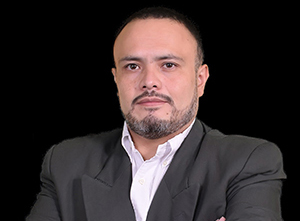Bolivia, miracle or nightmare?

By: Hugo Marcelo Balderrama - 16/06/2024
Guest columnist.Share:
Bolivia, my native country, became relevant in 2013 when its GDP reached a growth of 6.5%. Much of the press began to talk about a "miracle" produced by the Productive Community Social Economic Model (MESCP).
The names of Evo Morales, Álvaro García Linera and Luis Arce Catacora occupied the headlines of specialized magazines. Likewise, Bolivian and foreign universities began to fill them with honorary doctorates. Even the College of Economists of Bolivia named the coca grower an honorary Economist.
However, were we Bolivians witnessing a true miracle or just another of the many scams that abound in our history?
Let's start from the beginning, the Productive Social Community Economic Model, despite the bombast of the name, was nothing more than the hyperstimulation of Aggregate Demand through Public Expenditure, the highest in seven decades. The resources for the waste came, eureka, from the gas revenue that Evo and his accomplices raided as soon as they came to power.
Everyone looked for a space to suck on each other's tits, obviously, with enormous doses of corruption involved. Let's see.
Bolivia changes, Evo complies, it was one of the mechanisms that the dictatorship used to spend gas revenue. The scheme benefited a group of 20 companies, some of them owned by businessmen close to the ruling party and political allies in key legislative positions. The plan ended with abandoned, unfinished, oversized works or with structural and even design flaws, white elephants, in colloquial terms.
According to data presented by CONNECTAS, all the paraphernalia that Morales organized around his star program caused losses of at least 102 million bolivianos (14.7 million dollars).
The end of this scheme came on December 11, 2014, as Evo himself had to express his concern about the fall in the price of oil, therefore, gas. However, Morales was not willing to stop the waste and revelry, which is why he said: "Bolivia has a financial cushion of 40 billion dollars to guarantee economic stability. "I have already consulted experts to see what we are going to do."
Let's be honest, Morales, who lacks the most basic culture, did not have the ability to analyze that data, much less know where those millions were. Ergo, he was repeating a speech prepared for him by his entourage, Arce Catacora, one of his closest friends.
The 40 billion were composed as follows: 15 billion of International Reserves, 15 billion of private deposits in the financial sector and 10 billion in retirement funds. It was obvious that they were going to use those resources as if they were freely available, Fatal Arrogance, which the great Hayek described.
What was the results?
In 2014, we had 15 billion dollars in international reserves, today we have? Nobody knows the specific data, since the Central Bank does not have updated information.
As for retirement funds, $200 million were "invested" in bonds from the Central Bank of Bolivia (BCB), at an interest rate of 6.5% for three years. The quotes refer to the fact that, in reality, it is about using the workers' money to support the waste, or does anyone in their right mind think that that money will be returned in time and material?
The Arce Catacora government's strategy of increasing state spending and stimulating demand is a recipe for disaster. Far from solving Bolivia's economic problems, this policy is paving the way towards a deeper crisis, since the increase in the money supply, combined with the nationalization and looting of pension funds, is the direct route to hyperinflation and the misery.
Meanwhile, the regime, in part to avoid its responsibility, asks us citizens to reduce our consumption of fuel and food. In short, Arce Catacora is simply repeating something that his admired Fidel Castro had already said in the 90s: "Poverty is a revolutionary virtue."
«The opinions published herein are the sole responsibility of its author».